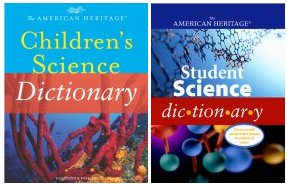Screaming for Ice Cream Additional Information
Share this:
- Share via email (Opens in new window) Email
- Click to share on Facebook (Opens in new window) Facebook
- Click to share on X (Opens in new window) X
- Click to share on Pinterest (Opens in new window) Pinterest
- Click to share on Reddit (Opens in new window) Reddit
- Share to Google Classroom (Opens in new window) Google Classroom
- Click to print (Opens in new window) Print
Information about ice cream is available at www.idfa.org/facts/icecream.cfm (International Dairy Foods Association).
To learn more about making healthier ice cream, go to www.cbsnews.com/stories/2003/02/17/health/main540901.shtml (CBS).
To see how personality and ice cream flavors go together, take a look at www.mda.state.mi.us/kids/countyfair/games/icecream/icecream.asp (Michigan Department of Agriculture) or www.channelone.com/life/2004/08/06/ice_cream/(ChannelOne).
Ideas for science projects involving ice cream can be found at
www.stevespanglerscience.com/experiment/00000042 (Steve Spangler Science) and www.polsci.wvu.edu/Henry/Icecream/Icecream.html (West Virginia University).
Lesson plans involving the science of ice cream are available at
www.microsoft.com/education/IceCreamScience.mspx (Microsoft Education), www.knowledge.state.va.us/cgi-bin/lesview.cgi?idl=399 (Commonwealth of Knowledge, Virginia), and www.teachnet.com/lesson/science/icecream051999.html
(TeachNet).
Books recommended by SearchIt!Science:
 |
Ice Cream— Jules Older
Published by Charlesbridge Publishing, 2002.
Chocolate or vanilla, strawberry or butter pecan, just about everybody loves cold, creamy ice cream. But do you ever lick an ice cream cone, and wonder how your yummy treat was made? Filled with cartoon-like illustrations and fun facts, this informative book explains all about ice cream: how people used to make it before ice cream factories and refrigeration, and how we make ice cream today. Read about the great moments in ice cream history—like when Roman emperor Nero sent his men to the mountains to fetch snow so he could have honey ice and fruit ice, or Thomas Jefferson brought ice cream to America. Find out what baked Alaska is, how the ice cream sundae got its name, and how the ice cream cone was invented. Warning: you will probably be hungry after reading this book! |
 |
Ice Cream Treats: The Inside Scoop— Paul Fleisher
Published by Carolrhoda Books/Lerner Publishing, 2001.
Who doesn’t love ice cream treats? In this book, you can learn all about them. Find out what ice cream is made of and read about the history of ice cream. Then, take a trip to the ice cream factory to watch treats being made! Meet the factory workers and learn about the machines that turn milk, cream, and sugar into a batch of newly packaged ice cream bars. The book includes recipes so that you can make your own ice cream at home. |
Power Words
emulsion A mixture of two liquids in which tiny droplets of the first liquid are mixed throughout the second. Oils can be mixed with water to form emulsions like paint.
freezing point The temperature at which a liquid becomes a solid. The freezing point of the liquid form of a substance is the same as the melting point of the solid form. The freezing point of water is 32° Fahrenheit (0° Celsius), and the freezing point of liquid nitrogen is –345.75° Fahrenheit (–209.89° Celsius).
Copyright © 2002, 2003 Houghton-Mifflin Company. All rights reserved. Used with permission.
